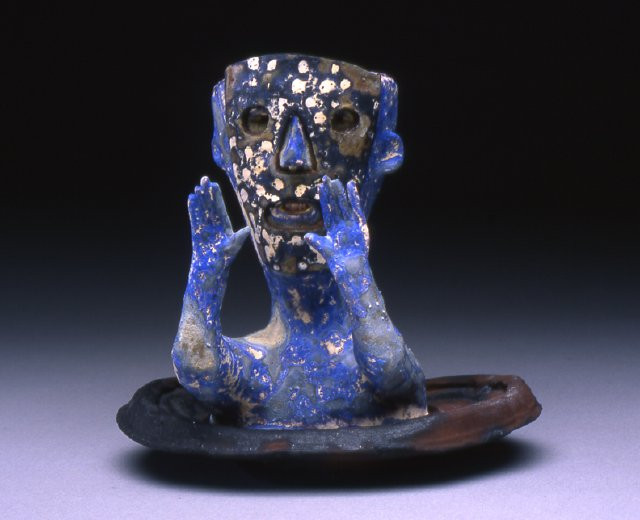What Is A Cone?
February 8 2013 - May 5 2013
This small exhibit in MAM’s Goldberg Library is designed to educate people about the use of pyrometric cones as an important tool for determining accurately when it is time to turn off the kiln when firing ceramics. Pyrometric cones are slender pyramids made from carefully controlled compositions. Each cone is assigned a unique number that correlates with the target temperature and other kiln conditions. Technically, cones do not simply measure the amount of heat in the kiln, but how much heat-energy the ceramic materials in the kiln have absorbed and gauging the reaction of glazes to the firing. The hottest cone is named a cone 10, gradually reducing in temperature to the designation cone 1 and then even cooler temperatures continue at cone 01, cone 02, and so forth. As the cone nears its prescribed temperature range, it softens and the tip begins to bend, drawn down by the influence of gravity. Generally, three cones are placed in the kiln, set in ascending order. For example, if you were firing the kiln to cone five, your cone pack would have a cone four, a cone five, and a cone six. When the first cone in the cone pack begins to bend, it is time for the potter to pay more attention to the kiln. It typically takes about 20 minutes for the cone to bend fully. A perfectly fired cone will bend forward at a 90-degree angle. If less than 90 degrees, the kiln was underfired. If more, the kiln was over fired.


